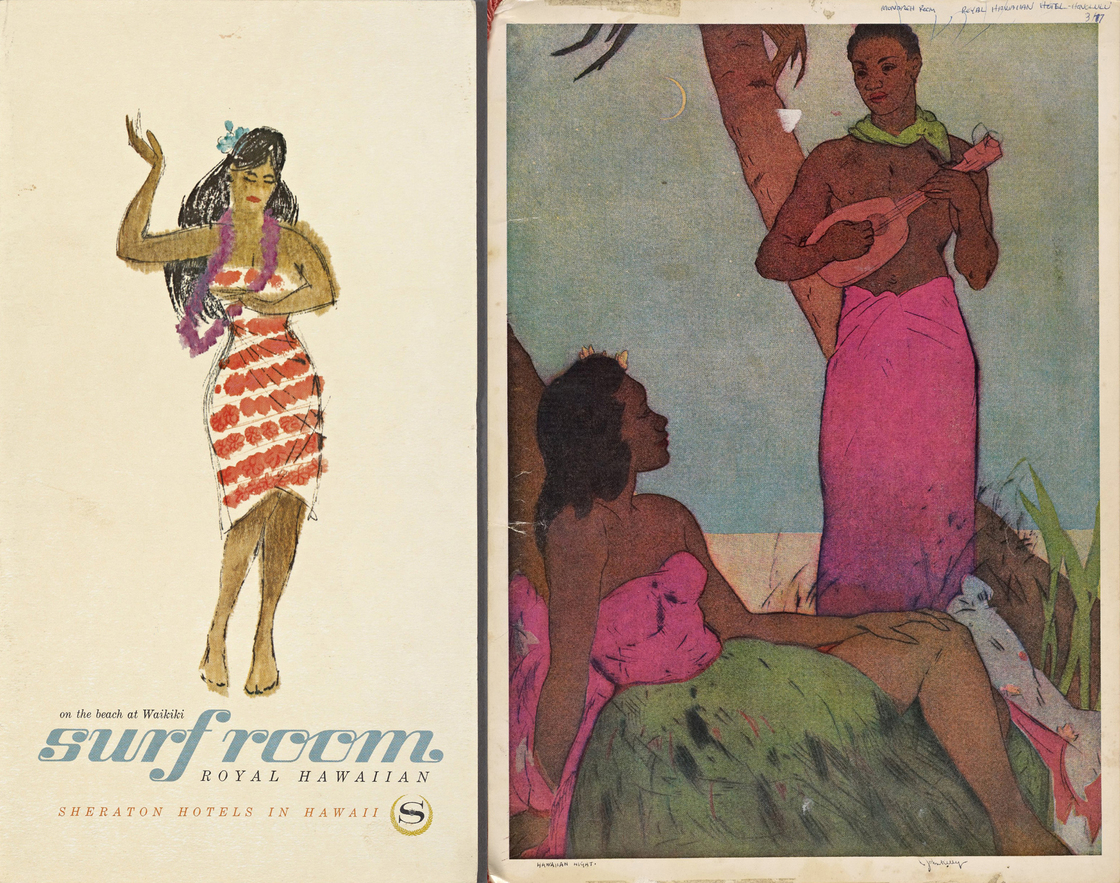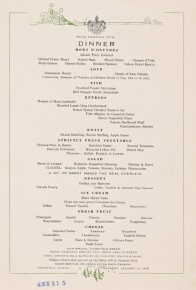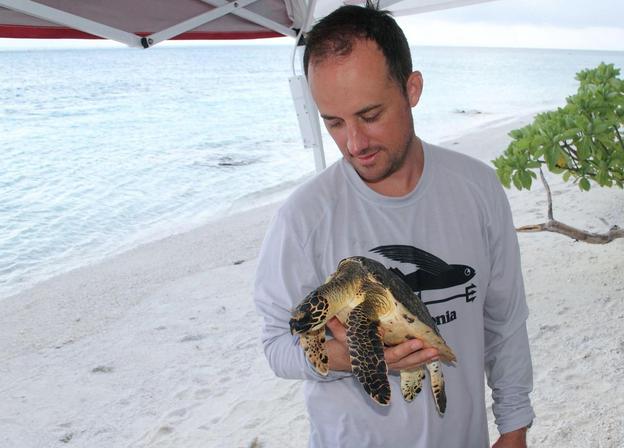
Listen to the Story on Morning Edition

Listen to the Story on Morning Edition
Post by Christopher Joyce, The Salt at NPR Food (8/9/2013)
In the early to mid-1900s, the islands of Hawaii were a far-away, exotic destination. People who managed to get there often kept mementos of that journey including kitschy menus from Hawaiian fine dining restaurants and hotels like like Trader Vic's and Prince Kuhio's.
Now these old menus are serving a purpose beyond colorful relics from the past. Kyle Van Houtan, an ecologist with the National Oceanic and Atmospheric Administration, says he's found a scientific purpose for the menus.
Years ago, he traveled to Hawaii to study sea turtles. He wanted to know where they ended up. In a shark's belly? Or as turtle soup?
One day he got one of those lightning-bolt ideas: Maybe turtle would show on old restaurant menus? Over time, he collected 500 menus.
"People had just kept them because they were beautiful," Van Houtan says. "They were memorabilia of grandma's trip and grandpa's to Hawaii in 1915."
He also combed through menus from galleries, a museum — even the Las Vegas Public Library. But Van Houtan came up empty handed. There were no sea turtles on the menus. Ever.

What the ecologist did happen upon was a different marine discovery. After World War II, a lot of the locally caught fish were bottom feeding and reef dwellers. Van Houtan says the types of fish that lived close to shore started to disappear from menus.
"Fish like snapper and flounder and grouper," he said. "They really took a nosedive."
So, Van Houtan used fisheries data combined with his menus to calculate this interesting tidbit: Local fish numbers had dropped to about a tenth of what they once were.
"These are very desirable fish," he said. "They used to be on the menus we see them on there in the 1930s and 1940s, but they're not in any of the menus today."
Fast-forward 20 years and swanky 60s eateries like the Tropics had replaced local fish with deep ocean fish, like tuna and swordfish. Or Maine lobster, flown in from the mainland, washed down with 85-cent martinis.
There were still a few quirky island offerings, too. Apparently, tourists couldn't get enough of Hawaiian pickled onions -- not so surprising for 1960s palates.
Aside from sour appetizers, there was real scientific value in Van Houtan's fish forensics.
Here's why: Fisheries records in Hawaii were nonexistent until about 1950, and pretty spotty for years after. With these menus and fish entrees, Van Houtan was able to chronicle a crash in local fisheries and a shift to deep ocean fish.
True, changing tastes might have also played a role, but clearly something — overfishing, pollution or both — had hurt local fish populations.

Van Houtan published his findings in the journal Frontiers in Ecology. One of his coauthors is Loren McClenachan, an environmental scientist at Colby College in Maine. She did similar research on Caribbean fisheries, based on diaries.
"Travelers' [diaries] mostly, so early natural history diaries," McClenachan said. "I used a published diary from a pirate who traveled around the Caribbean in the 1600s."
McClenachan says other scientists are calling them now with ideas on how to mine menus for more information.
"For example, changes in price and ... rarity," she said. "Did things get more expensive before they disappear?"
If that's the case, then the Hawaiian beach-side cocktail may be headed for extinction. That 85-cent martini in 1969 is now $14 in Waikiki.
Copyright 2013 NPR.